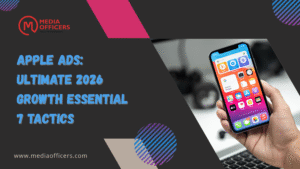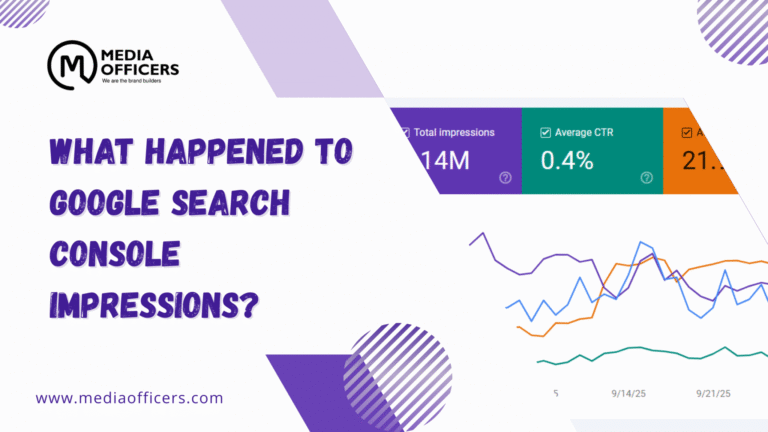Apple Ads is transforming iOS marketing in 2026, signaling a broader shift beyond the App Store search and into a true growth engine. This guide breaks down what you need to know to win on Apple Ads this year, with practical tactics you can implement today. By embracing the changes, you can turn privacy-friendly signals into durable performance and build a sustainable paid growth program on iOS.
The Apple Ads Advantage in the Privacy Era
In the post ATT world, Apple Ads has actually grown stronger. Apple leans on its first‑party data to preserve targeting precision and conversion rates, while other platforms struggle with signal loss. Industry benchmarks show that search result ads can deliver conversion rates well over 60 percent, a level that aligns with many teams’ real-world results. When a user searches in the App Store, the intent is high and the moment of decision is near, making these placements among the most efficient opportunities for paid growth today.
That privacy‑conscious advantage isn’t just theoretical. It translates into reliable cost per install structures and clear intent signals that reduce wasted spend. For advertisers who embrace Apple Ads as a core channel rather than a temporary tactic, the platform has become a fast‑moving growth engine on iOS.
Two Modes: Basic vs Advanced and Why Basic May Not Cut It
Apple offers two paths to run ads: Basic and Advanced. Basic feels like an easy button Apple handles optimization and you pay per install instead of a click. It’s attractive for teams with limited resources or a desire for a quick start. However, Basic is limited: you’re capped at 10,000 USD per app per month, placements are restricted to search results, and you can’t choose keywords or audiences. In practice, many marketers start here, hit the cap, and discover that true scalability requires Advanced.
Advanced mode mirrors more traditional PPC thinking. You set bids, audiences, and creative, but you must adapt to Apple’s unique measurement and placement dynamics. The payoff is clearer control and better efficiency: when campaigns are optimized around exact keywords, precise bidding, and targeted placements, CPIs and CPA remain within acceptable ranges while scale grows. Data from AppTweak and industry benchmarks show that Basic campaigns often run 15–25 percent higher CPIs than well‑tuned Advanced campaigns a difference that compounds quickly with scale.
Placements and When to Use Each
Apple Ads provides four placements, each with distinct strategic benefits and creative requirements. A smart advertiser tests them independently to identify where the incremental value lies:
- Search results — High intent, immediate action. Users typing a query like budget tracker tend to convert quickly, making this placement a core pillar for relevant, keyword-driven campaigns.
- Search tab — Prime real estate before a user even initiates a search. It’s a visibility play that can capture interest at the top of the funnel, especially for brand and demand-gen efforts.
- Today tab — The App Store homepage. High impact and premium, but with higher costs. Creative must stand out to win attention here.
- Product pages — Appear in the You Might Also Like area when users view an app. Great for capturing competitor audiences, but the competition can also follow you there. Creative and CPP alignment is crucial.
Strategy matters: don’t spread budgets evenly across all four placements. Run controlled tests, identify the top performers, and reallocate to maximize efficiency while preserving a positive ROAS.
A Campaign Structure That Actually Delivers
After extensive testing, four intent-based campaign types consistently outperform the rest on Apple Ads. Build these as the backbone of your structure and stay disciplined with optimization levers.
- Brand campaigns — Protect your app and company name with exact match and aggressive bids. This is foundational; losing branded installs to competitors is a costly mistake.
- Category campaigns — Target non-branded terms that describe what your app does, such as a meditation app targeting terms like sleep sounds or mindfulness. These drive volume but come with higher CPCs; monitor bids and adjust as needed.
- Competitor campaigns — Target rival brands. Pair with Custom Product Pages to highlight your advantages. Expect higher CPIs, but users who convert often have strong lifetime value due to pre‑existing consideration.
- Discovery campaigns — A testing ground. Use one ad group with broad match variants and another with Search Match enabled to uncover new terms Apple’s algorithm finds relevant. A critical tip: always add exact-match winners as negatives in Discovery to avoid self‑competition.
Custom Product Pages: The Creative Game-Changer
Creative Sets are retired, but Custom Product Pages CPPs are here to stay. You can create up to 35 CPPs per app, each with its own screenshots, previews, and promotional text tailored to a specific audience or keyword theme. Analyses show CPPs deliver measurable lifts when aligned with user intent. Games see roughly an 8 percent uplift in conversion rates, while non‑gaming apps typically see about 6.6 percent though these are directional benchmarks rather than guarantees. CPPs matter because relevance drives action; when a search term like meal planning aligns with CPP content that highlights meal planning features, hesitation drops and conversions rise.
To activate CPPs, build the pages in App Store Connect, then select the appropriate CPP as an ad variation inside your Apple Ads ad group. This enables a direct, audience‑driven path from search terms to highly relevant creative variations.
Bidding, Budgets, and the Anatomy of Efficient Bids
Apple Ads operates on a cost-per-tap model where you set maximum bids and typically pay just a cent above the next highest bidder. The challenge is balancing a bid that wins auctions without inflating costs. A practical framework is to multiply your target CPA by your estimated conversion rate. For example, if your target CPA is 5 and your install rate is 20 percent, your starting bid would be around 1 a baseline for profitability. Regularly monitor Impression Share to gauge visibility. If you’re not capturing a meaningful slice of impressions, consider higher bids or budgets, but always weigh the impact on CPA.
A frequent misstep is making sharp bid changes. Small, incremental adjustments provide cleaner data and allow the Apple Ads algorithm to stabilize. This measured approach reduces noise and accelerates learning, especially in volatile markets or when testing new audiences.
Audience Targeting: Less is More
Paradoxically, one of the strongest moves in Apple Ads is not heavy demographic targeting. Filters based on age or gender exclude a significant share of users who have disabled Personalized Ads. Instead, rely on keywords, CPPs, and creative alignment to attract the right audience naturally. Geography is the one audience dimension worth applying consistently. Splitting campaigns by country or region notably separating the US accounts for regional differences in competition, costs, and conversion behavior. This enables granular budget and bid optimization across markets.
Common Mistakes That Kill Campaigns
Foundations influence outcomes just as much as tactics. Avoid these errors to keep learning intact and costs under control:
- Keyword overlap across campaigns. This splits your budget and confuses optimization. Use precise exact-match negatives to prevent cannibalization.
- Ignoring search terms reports. Apple provides term-level data; review weekly and add irrelevant terms as negatives. Without this discipline, wasted spend climbs fast.
- Running with CPA caps from day one. Caps dramatically reduce impressions and hinder learning. Start without caps and add them only after you understand baseline performance.
- Over-reliance on broad match. Reserve broad match for Discovery campaigns. For other campaigns, opt for exact match to maintain control and optimization clarity.
- Skipping Custom Product Pages. CPPs are a proven lever to boost conversions; don’t overlook them even for basic keyword sets.
How to Scale Without Destroying Efficiency
Scaling Apple Ads requires patience and a structured approach. Begin with high-performing campaigns that are delivery constrained, then raise daily budgets gradually and allow results to stabilize. Use Impression Share insights to determine if limited coverage is the bottleneck. If share is low and unit economics stay healthy, increase bids or budgets to unlock more auctions. Expand keywords strategically in Discovery campaigns, then move converters into exact-match campaigns and add negative keywords to protect efficiency. Segment campaigns by geography whenever possible, recognizing that the US often behaves differently from other storefronts. Treat Impression Share as directional, not a fixed target, and scale while ROAS remains positive.
Attribution and Measurement in 2026
Apple Ads attribution has matured. In 2025 Apple officially registered Apple Ads with Ad Attribution Kit, delivering a consistent cross‑platform framework for performance comparison. View‑through attribution now credits installs from ad impressions within 24 hours, uncovering conversions that previously stayed hidden. Although Apple Ads leverages first‑party App Store data and maintains signal under iOS privacy rules, a mobile measurement partner remains essential. Tools like AppsFlyer, Adjust, and Branch integrate with Apple Ads for post‑install event tracking, revenue insights, and cross‑channel comparisons. Focus not only on installs but on the downstream value: ROAS, trial to paid conversions, Day 7 retention, and revenue per user.
What’s Coming Next
The shift from Apple Search Ads to Apple Ads signals a broader pivot toward streaming ads, remarketing, and deeper platform integration. The ecosystem is expanding, and competition plus CPCs are rising in key markets. But opportunity remains for those who master Advanced mode, leverage Custom Product Pages, and scale with discipline. The winners aren’t always those with the largest budgets; they’re the teams executing smarter, more targeted strategies.
Your Rollout Blueprint
Ready to put these tactics into action? Here is a practical rollout sequence designed to keep your data clean and your results reliable from day one.
- Launch in Advanced mode skip Basic to maximize control and data fidelity.
- Build the four‑campaign structure: Brand, Category, Competitor, and Discovery.
- Start with Search Results placement before expanding to other placements.
- Create Custom Product Pages aligned with your top keywords and messaging.
- Integrate a mobile measurement partner for post‑install and revenue tracking.
- Review search terms weekly and build a comprehensive negative keyword list.
- Scale gradually patience sustains profitability; avoid aggressive, sudden budget jumps.
Apple Ads isn’t the easiest platform to master, but it has become essential for iOS growth. The apps that win in 2026 and beyond aren’t necessarily those with the biggest budgets; they’re the ones deploying the smartest strategies with disciplined execution.
Frequently Asked Questions
What is the key difference between Apple Ads Basic and Advanced?
Basic offers automated optimization by Apple with a per‑install pricing model and strict limits, while Advanced provides full control over bids, keywords, and placements, at the cost of added setup complexity. For scalable growth, Advanced is usually the recommended path.
How should I structure campaigns for the best results?
Use four intent‑based campaigns: Brand, Category, Competitor, and Discovery. Pair with Custom Product Pages to improve relevance. Test Placements independently and allocate budgets to the top performers. Always negatives in Discovery to avoid self‑competition.
How important are Custom Product Pages in 2026?
CPPs are a core creative lever. They align user intent with a targeted landing experience, improving conversion rates and ROAS. Build multiple CPP variations and tie them to high‑performing keywords to scale efficiently.
What metrics should I monitor beyond installs?
Track ROAS, trial‑to‑paid conversions, Day 7 retention, and revenue per user. With the evolving attribution model, ensure your MMP is integrated to capture post‑install events and cross‑channel impact.
Conclusion
As Apple Ads evolves beyond a simple search advertising platform, the smartest advertisers are embracing the four‑campaign structure, deep CPP integration, and disciplined scaling. The privacy era has given Apple a durable data advantage, but only those who couple that advantage with precise bidding, thoughtful placement testing, and robust measurement will unlock durable growth on iOS. If you commit to Advanced mode, leverage CPPs, and scale with care, you can build a winning Apple Ads program for 2026 and beyond.





